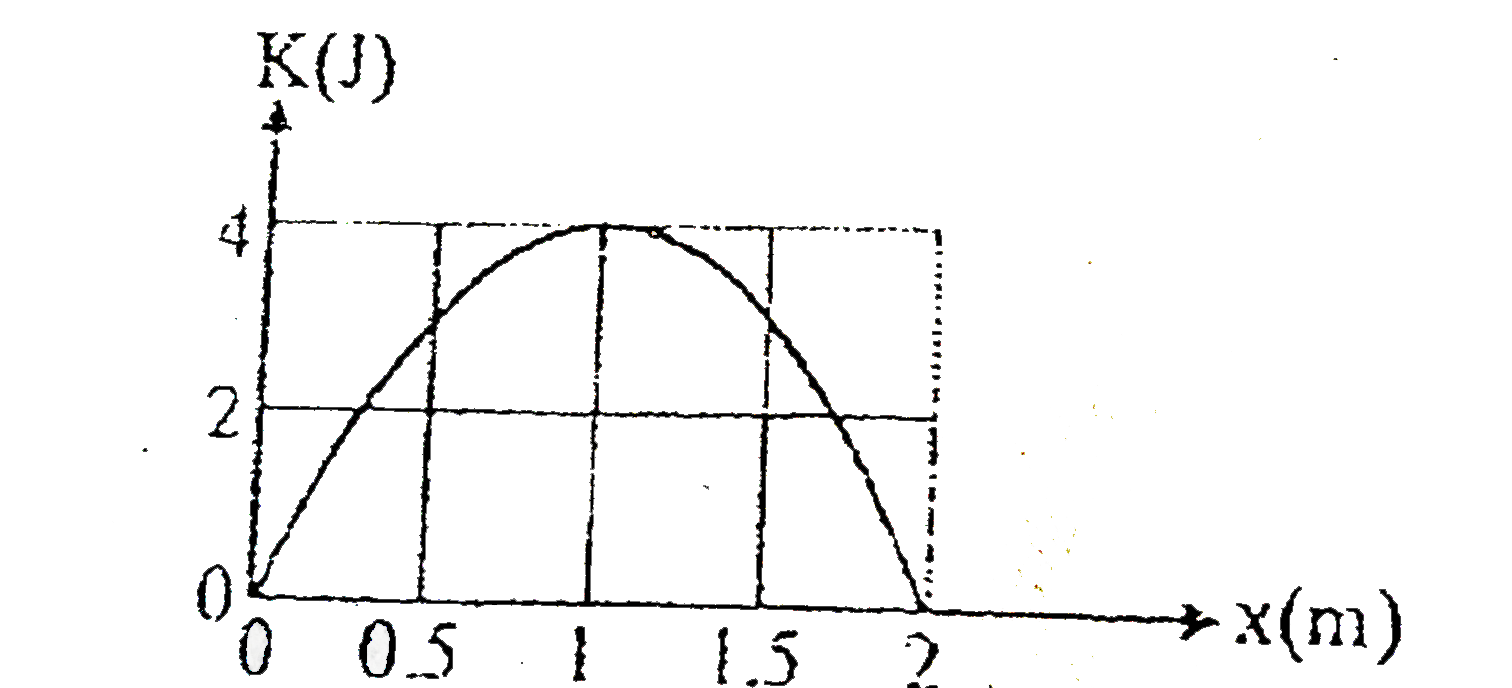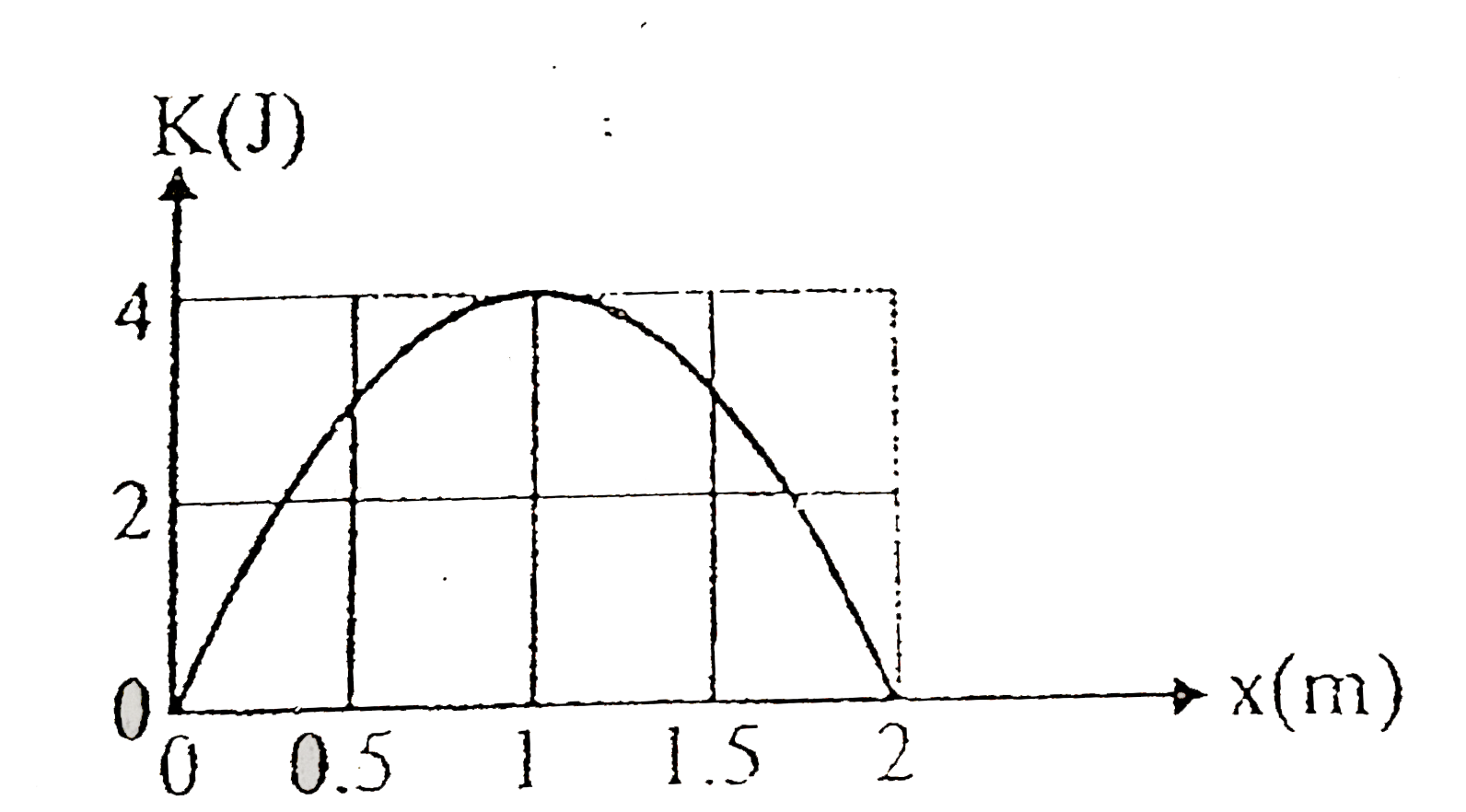A 1.5 kg block is initially at rest on a horizontal frictionless surface when a horizontal force in the positive direction of X-axis is applied to the block. The force is given by →F=(4−x2)ˆiN, where x is in metre and the initial position of the block is x = 0. The maximum kinetic energy of the block between x = 0 and x = 2.0 m isSolution in Marathi
2.33 J
3.33 J
5.33 J
6.67 J
Step by step video & image solution for A 1.5 kg block is initially at rest on a horizontal frictionless surface when a horizontal force in the positive direction of X-axis is applied to the block. The force is given by vec F = (4 - x ^2) hati N, where x is in metre and the initial position of the block is x = 0. The maximum kinetic energy of the block between x = 0 and x = 2.0 m is by Physics experts to help you in doubts & scoring excellent marks in Class 11 exams.
Updated on:21/07/2023Topper's Solved these Questions
Similar Questions
Which of the following is NOT the characteristic of gravitational force ?
View SolutionThe magnetic field due to a current carrying circular loop of radius 6 cm at a point on the axis at a distance of 8 cm from the centre is 108 μT. What will be its value at the centre of the loop?
View SolutionA 1.5-kg block is initially at rest on a horizontal frictionless surface when a horizontal force in the positive direction of x-axis is applied to the block. The force is given by vecF=(4-x^2)veciN , where x is in meter and the initial position of the block is x=0 . The maximum kinetic energy of the block between x=0 and x=2.0m is
View SolutionA 1.5-kg block is initially at rest on a horizontal frictionless surface when a horizontal force in the positive direction of x-axis is applied to the block. The force is given by vecF=(4-x^2)veciN , where x is in meter and the initial position of the block is x=0 . The maximum positive displacement x is
View SolutionA block of mass 4 kg is initially at rest on a horizontal frixtionless surface. A horizontal force vec(F) = (3+x) hat(i) newtons acts on it, when the block is at x = 0 . The maximum kinetic energy of the block between x = 0 and x = 2 m is
View SolutionA block of mass 4kg is initially at rest on a horizontal frictionless surface. A force →F=(2x+3x2)ˆiN acts horizontally on it. The maximum kinetic energy of the block between x=2m and x=4m in joules is
View SolutionA block of mass 2kg is initially at rest on a horizontal frictionless surface. A horizontal froce ¯¯¯F=(9−x2)¯i newton acts on it, when the block is at x=0. The maximum kinetic energy of the block between x=0m and x=3m in joule is
Conservation of mechanical energ
View SolutionA 1.5kg block is initially at rest on a horizontal frictionless surface. A horizontal force →F=(4−x2)ˆi is applied on the block. Initial position of the block is at x=0. The maximum kinetic enery of the block between x=0 and x=2m is
View SolutionA block is initially at rest on a horizontal frictionless surface when a horizontal force in the positive direction of an axis is applied to the block. The force is given by vecF=(1-x^(2))hatiN , where x is in meters and the initial position of the block is x=0 the maximum kinetic energy of the block is (2)/(n)J in between x=0 ad x=2 m find the value of n .
View SolutionA block of mass m lies on a horizontal frictionless surface and is attached to one end of a horizontal spring (with spring constant k) whose other end is fixed . The block is intinally at rest at the position where the spring is unstretched (x=0). When a constant horizontal force →F in the positive direction of the x−axis is applied to it, a plot of the resulting kinetic energy of the block versus its position x is shown in figure. What is the magnitude of →F ?

View SolutionA block of mass m lies on a horizontal frictionless surface and is attached to one end of a horizontal spring (with spring constant k) whose other end is fixed . The block is intinally at rest at the position where the spring is unstretched (x=0). When a costant horizontal force →F in the positive direction of the x−axis is applied to it, a plot of the resulting kinetic energy of the block verus its position x is shown in figure. What is the magnitude of →F

View SolutionA block of mass 1kg is at rest on a horizontal surface at x=0.A force of 6N is applied on block toward positive x -axis.Coefficient of friction between block and surface is variable and depends on the its distance x from origin as mu=((2-x)/(10)) . If v is speed of block at x=2. Find (v^(2))/(1000) .
View SolutionA 1.5 kg block is in a state on a frictionless horizontal plane. A force in the horizontal direction on the block F= (4 - x^2)i Newton is superimposed, where x is in meters. If the initial state of the block is x = 0, then the maximum kinetic energy of the block up to x = 2m will be
View SolutionThe block in Fig. 8-12a lies on a horizontal frictionless surface, and the spring constant is 50 N/m. Initially, the spring is at its relaxed length and the block is stationary at position x=0. Then an applied force with a constant magnitude of 3.0 N pulls the block in the positive direction of the x axis, stretching the spring until the block stops. When that stopping point is reached, what are (a) the position of the block, (b) the work that has been done on the block by the spring force ? During the block's displacement, what are (d) the block's position when its kinetic energy is maximum and (e) the value of that maximum kinetic energy ?
View SolutionA 1.0 kg block is initially at rest on a horizontal frictionless surface when a horizontal force along an x axis is applied to the block. The force is given by vec(F)(x)= (2.5-x^(2)) hat(i)N , where x is in meters and the initial position of the block is x=0 . (a) What is the kinetic energy of the block as it passes through x=2.0m ? (b) What is the maximum kinetic energy of the block between x=0 and x=2.0 m ?
View Solution
